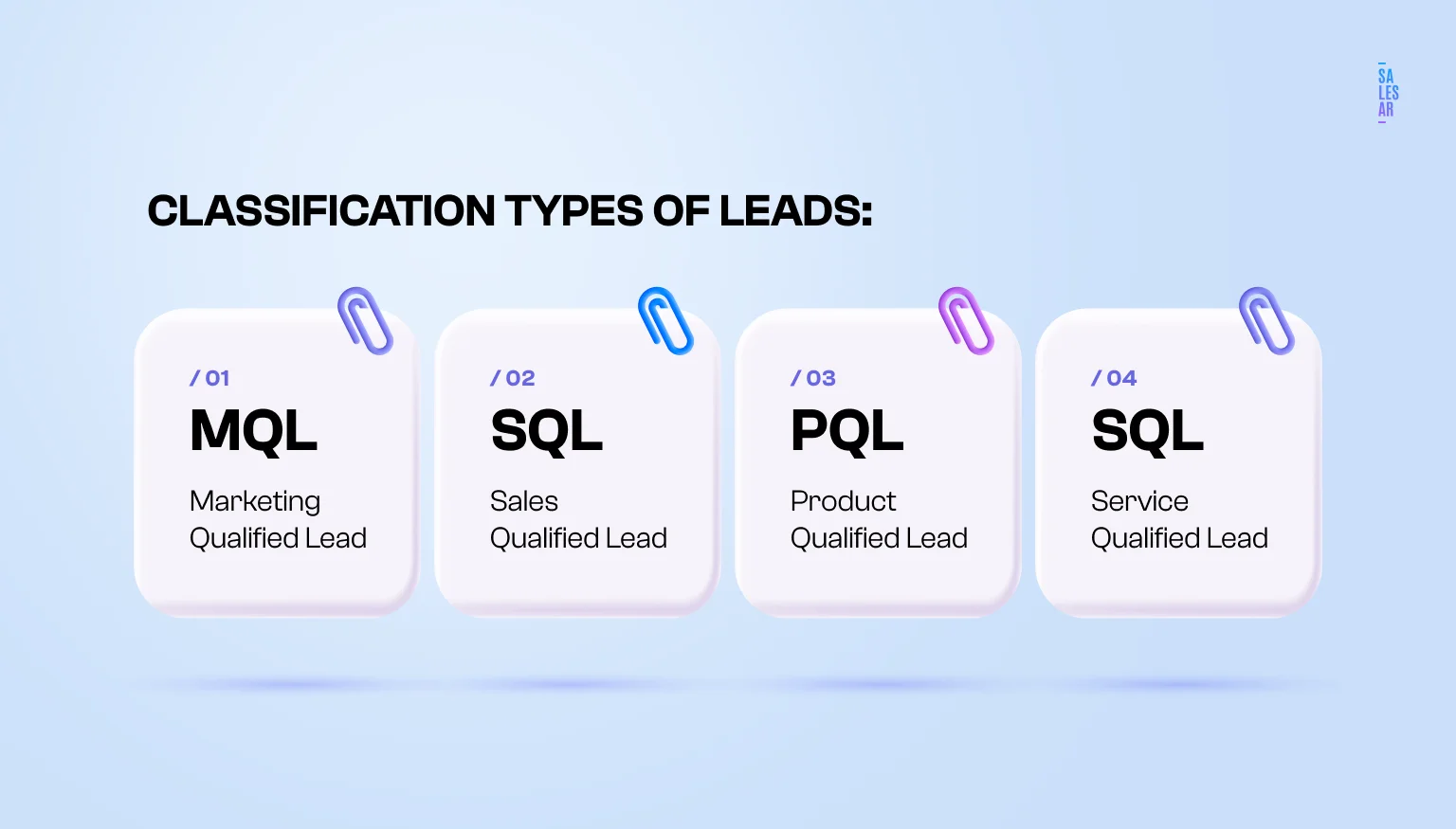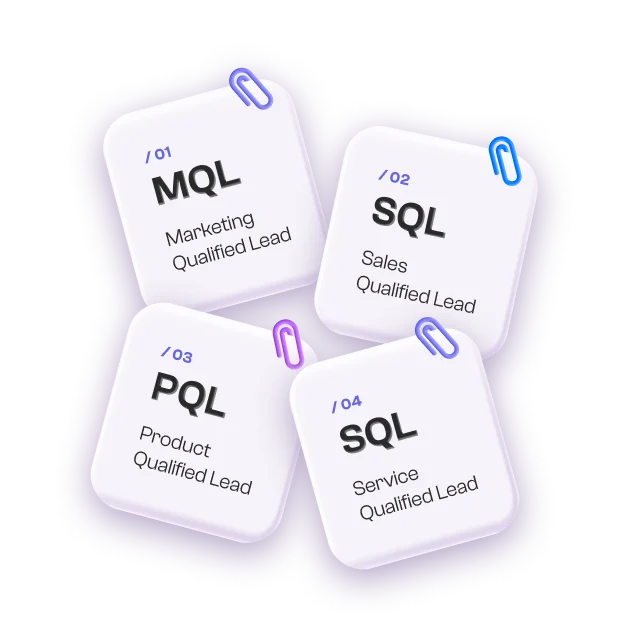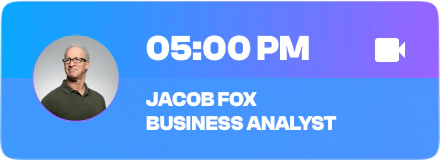If you’re wondering where do leads come from, what types of leads there are, and what does a lead mean in the first place, you’ve come to the right place. In this article, we will cover the basics mentioned above and explore the multitude of different classification types when it comes to leads in marketing.
What Are Leads in Marketing? – Definition
So, what is a lead in sales? A lead is a potential client/customer who is likely to show interest in a product or service. They’re the ones who can be converted into paying customers and keep the business going, and as such, are often compared to being the lifeblood of a business.
With the leads definition out of the way, let’s take a more in-depth look at the different types of leads there are and how you can generate them. Here are the most common classification types and examples of leads:
Marketing Qualified Lead (MQL)
A marketing-qualified lead is a lead that has shown interest in a product or service but is not yet ready to make a purchase. They have engaged with marketing efforts such as downloading a whitepaper or subscribing to a newsletter. These leads require further nurturing to move them closer to a purchase decision.
Sales Qualified Lead (SQL)
A sales-qualified lead is a lead that has been processed by the sales team as having a higher likelihood of making a purchase. They have shown a deeper interest in the product or service and have engaged in conversations with the sales team. These leads are closer to making a purchase decision and require a more personalized approach to convert them into customers.

Product Qualified Lead (PQL)
A product-qualified lead is a lead that has used the product or service and has shown a high level of interest. They may have signed up for a free trial or attended a product demo. These leads have already experienced the product or service and are more likely to make a purchase. They require a tailored approach to convert them into paying customers.
Service Qualified Lead (SQL)
A service-qualified lead is a lead that has shown interest in a service. They may have contacted the customer service team for support or have expressed interest in a service offering. These leads require a personalized approach to convert them into paying customers.
How to Convert Leads
In addition to the lead classification types mentioned above, leads can also be classified as cold, warm, or hot, and each requires its own process & conversion methodology.
Cold Leads
A cold lead is someone who has yet to demonstrate any interest in your solution but aligns perfectly with your ideal customer profile. Basically, they’re the most common type of lead in business. These leads are typically generated through lead generation services or via your own research. Regardless of how they entered your list, they are prospects with the potential for sales.
Cold leads are widely regarded as one of the most challenging types to convert into actual prospects. However, they are also the most prevalent type of leads, necessitating mastery of effective communication strategies.
How do you engage with cold leads?
- Persistence is key – Employ a series of calls, emails, and social interactions. Request a follow-up on your emails, and during phone conversations, emphasize your intention to schedule a meeting multiple times. Through these efforts, you should be able to secure a meeting and progress to the next stage.
- Address their pain points – Conduct research on the cold lead’s business and position yourself as a problem solver. Highlight your understanding of the challenges faced by individuals in their industry and demonstrate how your solutions can alleviate their pain points;
- Nurture them – Don’t be disheartened if you don’t receive an immediate response. Include these individuals in a nurture campaign where you can regularly send them valuable resources such as blog posts and industry articles. This way, you can stay on their radar until they are ready to reconnect with you.

Warm Leads
A warm lead refers to someone who already possesses knowledge about your business operations or may recognize your name. These individuals are the kind of leads who regularly follow your blogs, watch your videos, or have become familiar with your offerings through previous conversations with others. You can also place ecommerce leads here. Irrespective of the source, warm leads are more easily converted into potential customers compared to cold leads.
To effectively engage with warm leads, consider the following key approaches:
- Schedule a meeting or initiate a casual conversation to gain insights into their requirements and their business;
- If you had previously contacted them (let’s say a few months ago) and they expressed interest in your solutions but lacked the budget or timing wasn’t ideal, reconnect with them;
- You can initiate the conversation by saying something like, “I remember we had a discussion earlier, but at that time, your team wasn’t ready to proceed. However, you did show interest, so I wanted to follow up and see if any changes have occurred over time and if you require assistance with (mention their pain points or value proposition)”.
Hot Leads
Hot leads are the best leads for business since they have demonstrated interest in your company through various means. For instance, they may have completed a demo provided by your company or directly reached out to you with a desire to learn more. These leads demand immediate attention because their enthusiasm may wane if you delay your response. There’s a possibility that they may even approach your competitors to find the optimal solution for their needs. Hence, it is crucial to seize the opportunity while it’s still relevant.
Hot leads generally possess the following three characteristics:
- Need – They have expressed a specific pain point that your business is capable of addressing;
- Authority – They are typically decision-makers or possess purchasing power within their organization;
- Target Audience – They belong to a business that aligns with your target market.
Converting a hot lead into a prospect is not overly challenging. However, it is still essential to conduct some research on their business to ensure that you can genuinely cater to their requirements. Once this is done, you can arrange a follow-up meeting with them to initiate the discovery phase of the sales process.
Conclusion
While hot leads may seem like the ideal type of lead, businesses should not overlook the importance of warm and cold leads. By qualifying leads & nurturing warm and cold leads with targeted marketing efforts, businesses can build trust and credibility with potential customers and increase the likelihood of converting them into paying customers. When it comes to digital marketing, everyone matters.
In order to effectively convert online leads into paying customers, businesses must have a clear understanding of their target audience and their needs. By developing targeted marketing and sales strategies based on lead classification and customer insights, businesses can increase their chances of driving revenue growth and achieving long-term success.




